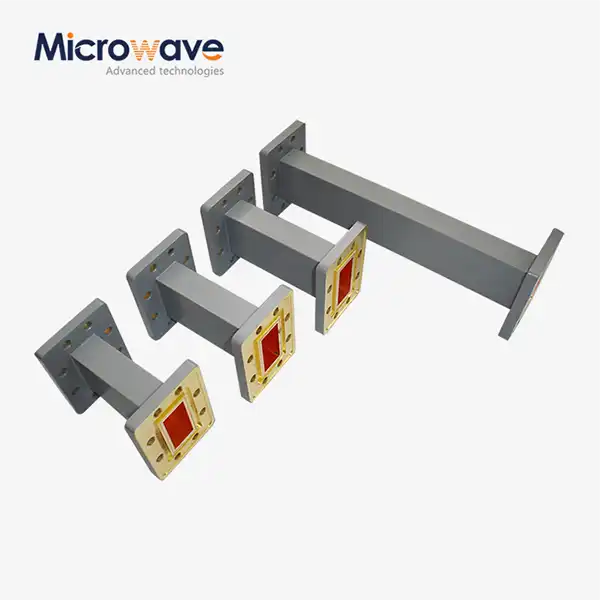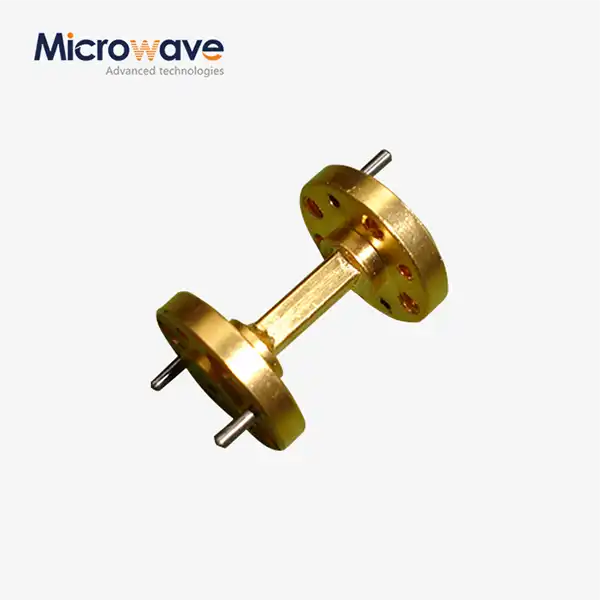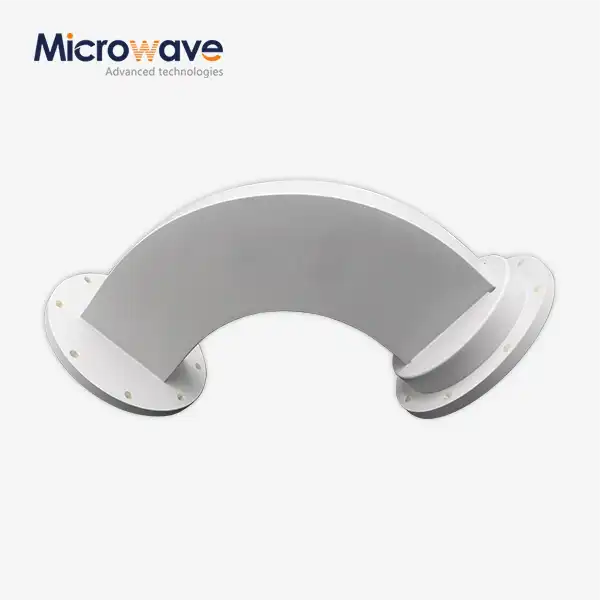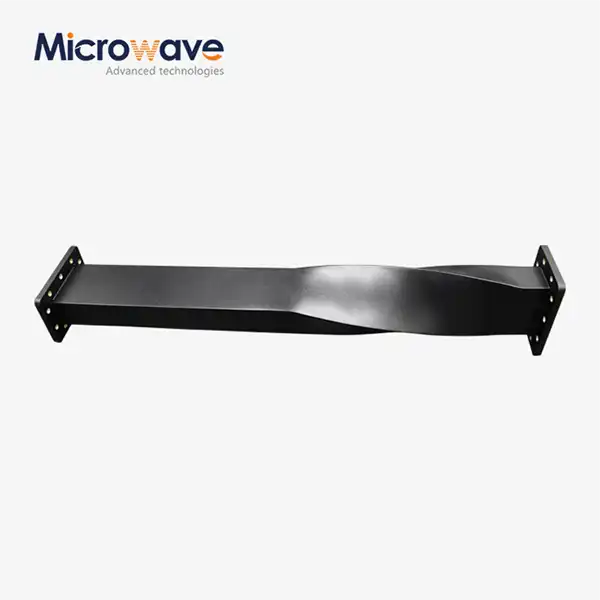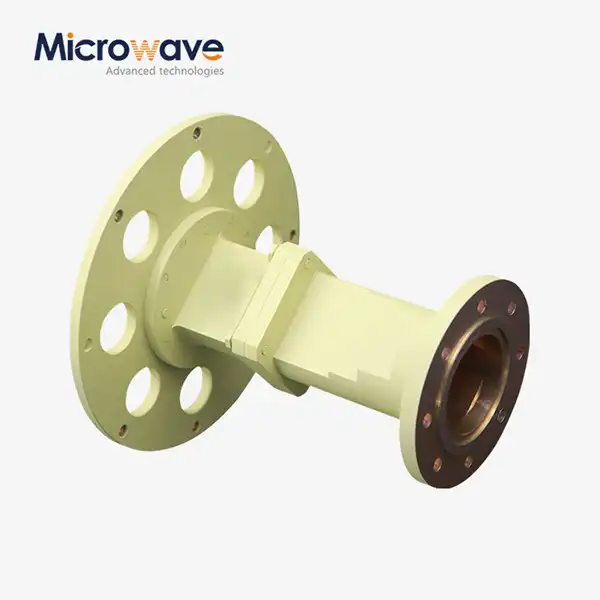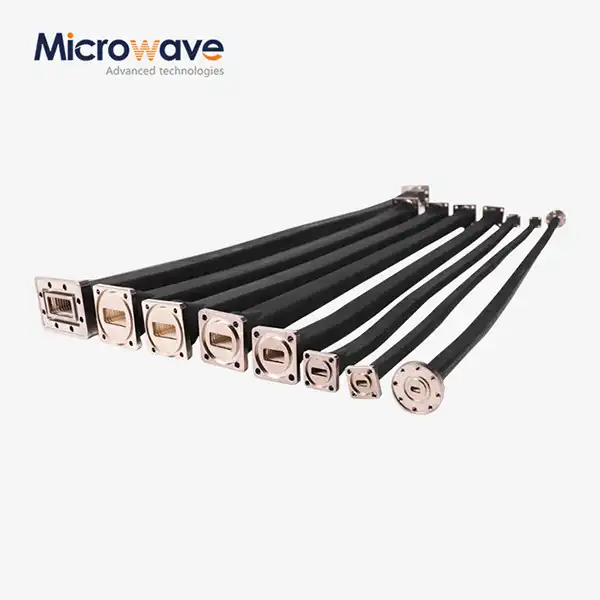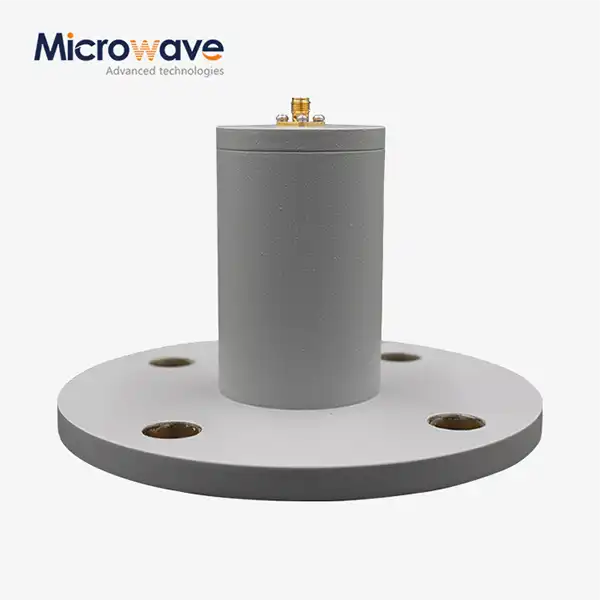What makes the open-boundary design of an Open Boundary Dual Linear Polarization Four Ridged Horn Antenna so effective for low-frequency extension?
The open-boundary design of an Open Boundary Dual Linear Polarization Four Ridged Horn Antenna represents a breakthrough in antenna engineering that fundamentally transforms how electromagnetic waves propagate at lower frequencies. This innovative design eliminates traditional boundary constraints, allowing the antenna's working band to expand significantly toward the low-frequency end of the spectrum. The removal of boundary limitations creates a smoother electromagnetic field transition, reducing reflections and impedance mismatches that typically restrict low-frequency performance. The four-ridged horn structure combined with the open-boundary configuration achieves superior bandwidth extension while maintaining excellent radiation characteristics, making it an ideal solution for applications requiring wide-band operation across diverse frequency ranges in satellite communications, defense systems, and aerospace technologies.
The Physics Behind Open-Boundary Design for Low-Frequency Extension
Electromagnetic Field Distribution and Boundary Conditions
The fundamental advantage of the Open Boundary Dual Linear Polarization Four Ridged Horn Antenna lies in its revolutionary approach to electromagnetic field management at the antenna aperture. Traditional horn antennas with closed boundaries create abrupt field discontinuities that generate unwanted reflections, particularly at lower frequencies where wavelengths are longer and more sensitive to boundary effects. The open-boundary design eliminates these sharp transitions by allowing electromagnetic fields to gradually taper off rather than being truncated at a defined edge. This smooth field transition is crucial for low-frequency extension because longer wavelengths require more gradual impedance changes to maintain efficient propagation. The four-ridged structure within the horn creates multiple field modes that interact constructively, and when combined with the open boundary, these modes can extend their operational range downward in frequency. Advanced computational electromagnetic modeling demonstrates that the open boundary reduces the effective electrical size of the antenna at low frequencies, making it appear electrically larger than its physical dimensions would suggest, thereby improving low-frequency performance significantly.
Wave Propagation Mechanics in Open-Boundary Structures
The wave propagation characteristics within an Open Boundary Dual Linear Polarization Four Ridged Horn Antenna differ fundamentally from conventional designs due to the absence of restrictive boundary conditions. In traditional horn antennas, electromagnetic waves encounter sharp impedance changes at the antenna edges, causing reflections that create standing wave patterns and limit the effective bandwidth, especially at lower frequencies. The open-boundary design allows waves to propagate more naturally, following the antenna's internal structure without encountering sudden discontinuities. This propagation mechanism is particularly beneficial for low-frequency extension because longer wavelengths are more susceptible to boundary-induced reflections. The four-ridged configuration creates a controlled multi-mode propagation environment where different field components can coexist and combine constructively. As frequency decreases, the open boundary allows the antenna to maintain its impedance matching characteristics by providing a more gradual transition from the antenna's internal impedance to free space. This smooth transition is essential for maintaining efficient power transfer and minimizing return loss across the extended frequency range, making the Open Boundary Dual Linear Polarization Four Ridged Horn Antenna exceptionally effective for broadband applications.
Impedance Matching and Frequency Response Optimization
The superior low-frequency performance of the Open Boundary Dual Linear Polarization Four Ridged Horn Antenna stems from its advanced impedance matching capabilities achieved through the open-boundary design. Impedance matching is critical for efficient power transfer between the antenna and its feeding network, and traditional boundaries often create impedance discontinuities that worsen at lower frequencies. The open-boundary configuration provides a more flexible impedance transformation mechanism that can accommodate the changing impedance characteristics as frequency varies. The four-ridged horn structure creates multiple impedance transformation stages, and the open boundary allows these transformations to extend their effective range toward lower frequencies. This extended impedance matching capability is particularly important because low-frequency operation typically requires larger antenna apertures or more sophisticated matching networks. The Open Boundary Dual Linear Polarization Four Ridged Horn Antenna achieves this extended matching without increasing physical size, making it highly efficient for applications where space and weight constraints are critical. The dual linear polarization capability adds another layer of complexity to the impedance matching, but the open-boundary design maintains excellent matching for both polarizations across the extended frequency range, ensuring consistent performance for diverse communication requirements.
Structural Engineering Advantages of Four-Ridged Horn Configuration
Ridge Geometry and Field Concentration Effects
The four-ridged horn structure in the Open Boundary Dual Linear Polarization Four Ridged Horn Antenna creates a unique electromagnetic environment that significantly enhances low-frequency performance when combined with the open-boundary design. The ridges serve as field concentrators that channel electromagnetic energy more efficiently than smooth-walled horn antennas, creating higher field intensities along the ridges while maintaining controlled field distribution across the aperture. This field concentration effect is particularly beneficial for low-frequency operation because it allows the antenna to maintain adequate gain and directivity even when operating at frequencies where the antenna appears electrically small. The four-ridge configuration provides symmetrical field distribution that supports dual linear polarization operation, ensuring that both orthogonal polarizations experience similar field enhancement benefits. The ridge geometry creates a controlled impedance environment that varies smoothly along the horn length, providing natural impedance transformation that extends the antenna's operational bandwidth toward lower frequencies. Advanced electromagnetic simulation studies show that the four-ridged structure combined with open boundaries creates field patterns that are more stable across frequency than conventional designs, making the Open Boundary Dual Linear Polarization Four Ridged Horn Antenna exceptionally suitable for broadband applications requiring consistent performance.
Mechanical Stability and Manufacturing Precision
The structural integrity of the Open Boundary Dual Linear Polarization Four Ridged Horn Antenna directly impacts its electromagnetic performance, particularly in the low-frequency range where dimensional tolerances become critical relative to wavelength. The four-ridged horn configuration provides exceptional mechanical stability through its symmetric structure, which distributes mechanical stresses evenly and reduces the likelihood of deformation under environmental loads. This mechanical stability is crucial for maintaining precise electromagnetic characteristics because any structural changes can alter the antenna's impedance and radiation patterns. The open-boundary design eliminates the need for complex edge structures that are difficult to manufacture and maintain, simplifying the mechanical construction while improving electromagnetic performance. Manufacturing precision is enhanced because the open boundary reduces the number of critical dimensions that must be controlled during fabrication. The four-ridge structure provides clear reference points for manufacturing alignment and quality control, ensuring that each antenna meets specification requirements. Advanced manufacturing techniques, including precision machining and computer-controlled fabrication, can achieve the tight tolerances required for optimal performance of the Open Boundary Dual Linear Polarization Four Ridged Horn Antenna across its extended frequency range.
Material Selection and Environmental Durability
The material selection for the Open Boundary Dual Linear Polarization Four Ridged Horn Antenna must address both electromagnetic performance requirements and environmental durability challenges, particularly for applications in aerospace, defense, and satellite communications. The open-boundary design reduces material requirements compared to conventional horn antennas because it eliminates complex edge structures, but it demands materials with excellent electromagnetic properties and environmental resistance. High-conductivity materials such as aluminum alloys or copper are typically selected for the horn structure to minimize ohmic losses, which become more significant at lower frequencies where current densities are higher. The four-ridged configuration requires materials that can maintain their shape and electrical properties under varying thermal conditions, as thermal expansion differences between the ridges and horn walls can alter the antenna's electromagnetic characteristics. Surface treatments and coatings are critical for maintaining performance in harsh environments, and the open-boundary design allows for more effective application of protective finishes because there are fewer complex geometries to treat. The material selection process must also consider the antenna's weight requirements, particularly for aerospace applications where the Open Boundary Dual Linear Polarization Four Ridged Horn Antenna must provide superior performance while minimizing payload impact.
Performance Optimization and Application-Specific Benefits
Dual Polarization Capabilities and Signal Integrity
The dual linear polarization capability of the Open Boundary Dual Linear Polarization Four Ridged Horn Antenna provides significant advantages for modern communication systems that require high signal integrity and interference rejection. The open-boundary design enhances this capability by providing more uniform field distribution across both polarizations, reducing cross-polarization coupling that can degrade signal quality. This improved polarization performance is particularly important at lower frequencies where atmospheric effects and multipath propagation can cause polarization rotation and signal degradation. The four-ridged structure creates natural polarization selectivity that is enhanced by the open-boundary configuration, allowing the antenna to maintain excellent polarization purity across its extended frequency range. Applications such as satellite communications benefit significantly from this enhanced polarization performance because it allows for frequency reuse through polarization diversity, effectively doubling the channel capacity. The Open Boundary Dual Linear Polarization Four Ridged Horn Antenna maintains consistent polarization characteristics as frequency varies, ensuring reliable performance across the entire operational band. This consistency is crucial for systems that must maintain signal integrity across varying atmospheric conditions and operational scenarios, making the antenna ideal for critical communication links in aerospace and defense applications.
Radiation Pattern Control and Beamforming Efficiency
The radiation pattern characteristics of the Open Boundary Dual Linear Polarization Four Ridged Horn Antenna are significantly enhanced by the open-boundary design, which provides superior pattern control and beamforming efficiency across the extended frequency range. The elimination of boundary-induced diffraction effects results in cleaner radiation patterns with reduced sidelobe levels, particularly important for applications requiring precise beam control and minimal interference. The four-ridged structure creates controlled field distribution that translates into predictable and stable radiation patterns, while the open boundary prevents pattern distortion caused by edge effects. This combination results in radiation patterns that remain consistent as frequency varies, a critical requirement for broadband applications. The beamforming efficiency is enhanced because the open boundary allows for more effective utilization of the antenna aperture, reducing aperture blockage and improving illumination efficiency. Advanced beamforming applications benefit from the improved pattern stability because it allows for more accurate beam steering and null placement. The Open Boundary Dual Linear Polarization Four Ridged Horn Antenna can maintain high gain and directivity across its operational bandwidth, making it ideal for applications such as satellite tracking, radar systems, and point-to-point communications where precise beam control is essential for system performance.
Integration with Modern Communication Systems
The Open Boundary Dual Linear Polarization Four Ridged Horn Antenna offers exceptional integration capabilities with modern communication systems due to its wide bandwidth, stable performance characteristics, and compact design. The extended low-frequency capability allows single-antenna solutions for applications that previously required multiple antennas to cover the required frequency range, simplifying system architecture and reducing costs. Integration with software-defined radio systems is enhanced because the antenna's stable performance across frequency allows for dynamic frequency allocation without requiring antenna switching or retuning. The dual polarization capability supports advanced modulation schemes and MIMO (Multiple-Input Multiple-Output) configurations that are essential for high-data-rate communications. The open-boundary design provides better electromagnetic compatibility with other system components because it generates fewer spurious signals and has improved isolation characteristics. Modern phased array systems benefit from the antenna's stable phase center characteristics, which remain consistent across the extended frequency range due to the open-boundary design. The compact size and lightweight construction of the Open Boundary Dual Linear Polarization Four Ridged Horn Antenna make it suitable for mobile and portable applications where size and weight constraints are critical. Integration with automated positioning systems is simplified because the antenna's stable performance reduces the need for complex compensation algorithms that account for frequency-dependent characteristics.
Conclusion
The open-boundary design of the Open Boundary Dual Linear Polarization Four Ridged Horn Antenna represents a significant advancement in antenna technology, offering superior low-frequency extension through innovative electromagnetic field management. The elimination of traditional boundary constraints, combined with the four-ridged horn configuration, creates an antenna system that delivers exceptional performance across an extended frequency range while maintaining compact dimensions and reliable operation. This technology advancement enables new possibilities for broadband communication systems, radar applications, and satellite communications where consistent performance across wide frequency ranges is essential for mission success.
At Advanced Microwave Technologies Co., Ltd., we leverage over 20 years of experience in microwave technology to deliver cutting-edge solutions like the Open Boundary Dual Linear Polarization Four Ridged Horn Antenna. Our ISO-certified facilities, equipped with advanced measurement equipment up to 110 GHz, ensure that every product meets the highest quality standards. We offer comprehensive OEM services, including rapid prototyping, technical support, and customized solutions tailored to your specific requirements. Our expert engineering team provides complete technical assistance from initial consultation through installation and ongoing support, ensuring optimal performance for your application. Whether you're developing satellite communication systems, defense applications, or aerospace technologies, our products deliver the reliability and performance you need. Ready to enhance your system's capabilities with our advanced antenna solutions? Contact our technical team today at craig@admicrowave.com to discuss your specific requirements and discover how our Open Boundary Dual Linear Polarization Four Ridged Horn Antenna can transform your communication system performance.
References
1.Balanis, C. A. (2016). Antenna Theory: Analysis and Design, 4th Edition. John Wiley & Sons, New York.
2.Milligan, T. A. (2005). Modern Antenna Design, 2nd Edition. IEEE Press, Piscataway, NJ.
3.Stutzman, W. L., & Thiele, G. A. (2012). Antenna Theory and Design, 3rd Edition. John Wiley & Sons, Hoboken, NJ.
4.Collin, R. E. (2007). Foundations for Microwave Engineering, 2nd Edition. IEEE Press, New York.
5.Love, A. W. (1976). Electromagnetic Horn Antennas. IEEE Press, New York.
6.Olver, A. D., Clarricoats, P. J. B., Kishk, A. A., & Shafai, L. (1994). Microwave Horns and Feeds. IEEE Press, London.





